Clematis, the queen of the vines can be known as a heavy-feeding plant, but not having a complex fertilizing habitual. Therefore it’s easy to feed them by preparing your own homemade fertilizers for clematis plants.
For the purpose of fertilizing clematis, you gonna require kind of a low Nitrogen fertilizer and a balanced or high in Nitrogen fertilizer.
Here are some of the homemade fertilizers you can use on clematis plants.
- Bone meal
- Seaweed fertilizer
- Wood ash
- Cattle manure
- Worm castings
- Blood meal fertilizer
- Coffee grounds
Though clematis mainly required two kinds of fertilizing techniques including low Nitrogen to high, there are some things to consider such as, when and how to use them on clematis.
Keep hanging around with me. I will expose all the fertilizing secrets I’ve used to grow the perfect clematises.
Table of Contents
How and when to fertilize clematis?
Before we get into preparing homemade fertilizers for clematis, we need to know about what kind of nutrition and soil conditions they require.
Soil preparing for clematis
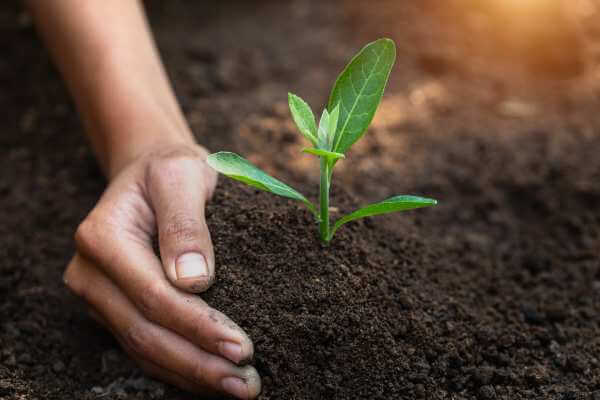
When we consider the soil, Clematis requires Ph-neutral soil. But still, you have to ensure the soil is rich with enough nutrients.
And also clematis is a kind of vine/bush that has one of the most sensitive root systems.
Therefore if you’re being too acidic or alkaline with the soil, it may tend to feel the vine badly.
So it’s better if you can do a soil test on your garden. Or if you already know the way your garden soil acts, you can amend the necessary ingredients according to the requirement.
For example, commonly most of the garden soil is slightly acidic as 3.5 – 4.0. Then you can amend wood ash into the soil and move it much closer to the neutralized form.
Therefore, once you transplant the clematis vine, use a good starter mix that is enriched with good organic matter.
The easiest way to make the starter soil is to mix up some well-aged compost with coconut coir and your garden soil.
And the other important thing regarding the soil is water drainage. Soil should have the ability to absorb well enough water and retain it for a well enough time. But not for too long.
Above mentioned starting soil with normal garden soil will be fine enough for good water-retainable and drainable soil for growing clematis.
But if you’ve more mud in the garden soil, you’ve to mix some general soil too.
And more importantly, keep your clematis vine well-watered, but don’t allow it to be soggy in the growing.
Fertilizing Clematis
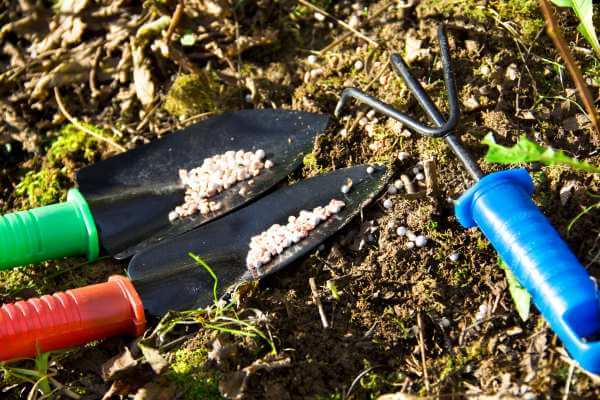
Usually, clematis can be planted in the early spring of March. And according to homeguides, it will take one to two years to take out the first bloom from a clematis vine, if you start off with a starter plant.
So, I highly recommend you buy clematis vines from a plant nursery, where the vines are grown up to some long and ready to bloom. Therefore you can start using homemade fertilizers for clematis vines much quicker.
Once you transplant the clematis vine, keep feeding your plant upon to your preference using a general-purpose compost. You don’t require to feed them more often than every two weeks until you see new buds coming off from the vine.
You know what?
Composts are increasing the nutrient intake ability of the roots and let them feel much cooler.
When the vine arrives its blooming season, you are allowed to use your homemade fertilizers for clematis!
In this stage, you need to feed the clematis with a low-nitrogen fertilizer. Therefore the fertilizer is well concentrated at more Phoserous and Potassium, which helps to develop strong, healthy roots & stems, and on the other hand, encourages the blooming.
Do you feed clematis when in flower?
I asked this question from a well-experienced gardener on the web. I quoted his statements below.
Plants with ongoing production of flowers such as beans, pumpkin, tomato, cannabis, etc. All can be fertilized during the flowering.
Plant like a giant sunflower and corn and other plants thatonly produce flowers ones don’t need flowering fertilizer when they are already producing the flower. It’s a bit late then. (unless it’s very early stage, then it can still be benefitial)
Jasper Peeters
According to the above information, do you feed clematis when in flower?
Experiments observed that fertilizing the clematis while they’re blooming may shorten their blooming season. If blooms fade before midsummer, feed clematis with high Potassium. But in the early stage, where the flowers are just starting off, feeding fertilizer for clematis may tend to produce more, colorful, healthy, and bigger flowers.
Source:- Clemson cooperative extension
As the flower is where the production of the clematis vine is at its peak, fertilizing clematis when flowering may not make a dramatic difference.
Once you have done with the flowering season, now you have to switch to more nitrogenated homemade fertilizers for clematis plants.
The main benefit that a plant is having from getting enough nitrogen is foliage growth.
So it’s time to extend the growth of your clematis vine and also grow more leaves on their stem.
Those leaves also look pretty good, isn’t it?
Even though I mentioned a high nitrogen fertilizer, still a general-purpose 10-10-10 kinds of fertilizers are also eligible for clematis.
And also you can use this as an alternate fertilizer on every 4-6 weeks from where you transplanted the vine.
There you go. Now we are going to discover what are homemade fertilizers for clematis vines that you can use to have a massive production!
Also read : Best homemade liquid fertilizers for tomatoes
11 homemade fertilizers for sunflowers
Homemade fertilizers for clematis
1. Bone meal fertilizer
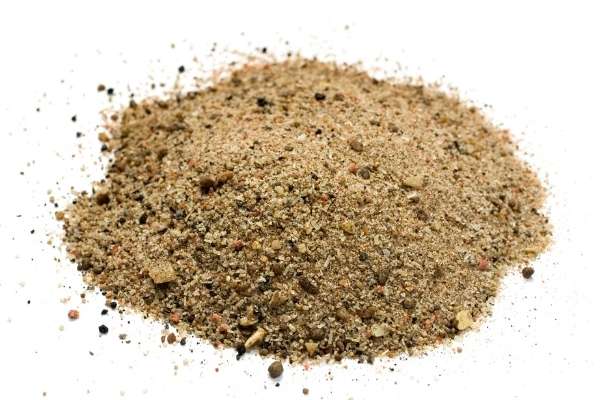
Bone meal is known as a fertilizer, generally within 4-23-0 NPK.
It consists of bones, hoofs, and antlers, and those things are breaking down from a dehydrating process. And that makes it easier to work it into the soil.
On the other hand bone meal also works as a slow release.
So, is bone meal good for Clematis?
Despiting the lack of potassium, because of the high Posperous content compared to the Nitrogen, bone meal is good for clematis as a fertilizer in the flowering season.
And the other thing is, you can also use bone meal as an alternate fertilizer or mid-summer fertilizer for your clematis vine. Because it almost only consists of Nitrogen and Posperous.
2. Seaweed fertilizer
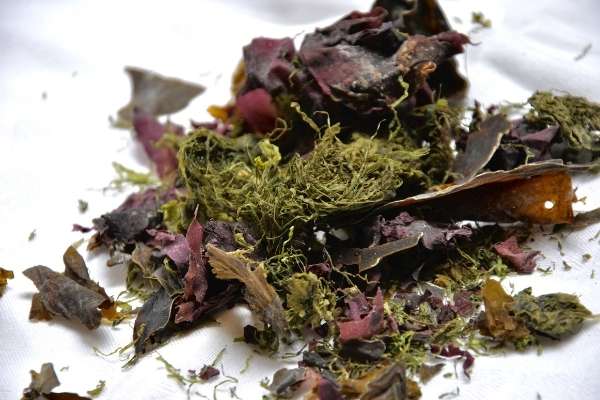
Kelp meal, which is also known as seaweed, is generally 1.5-0.5-2.5 in NPK. So it’s kind of a low Nitrogen and high Potassium fertilizer.
And I recommend preparing seaweed as a homemade fertilizer for clematis vines when they are blooming off their flower buds, considering their micronutrient content and high Potassium content.
If you asked me, is seaweed good for clematis, this will be my answer.
Organic seaweed fertilizer is a first choice for ornamentals such as clematis because they are enriched with high Potassium, Nitrogen, Calcium, Zinc, Boron, and also many plants’ growth hormones which let them bloom more and healthy flowers.
Every time when I use seaweed on my crops, they’ve brought me significant results. So why not for your clematis?
Seaweed can be turned into a homemade fertilizer for clematis mainly in two kinds of forms.
- Seaweed liquid
- Seaweed powder
Seaweed liquid is just that easy to make. All you need to do is, find some seaweeds from the seashore, wash out the salt content, put them into a bucket, and fill it up with water.
Keep it in a specified location for 2-3 weeks.
Boom! You own a homemade seaweed fertilizer to use on clematis vines.
If you are moving with seaweed powder, you’ve to dry the seaweed and blend it in a blender and have the extract.
For those who prefer the seaweed liquid as a homemade fertilizer for clematis, my advice is to dilute 1 cup of seaweed liquid into 10 cups of water.
If you’re going with powder, just amend less than a handful of powder into the soil. Because too much extract can burn the roots.
Considering the cause of the sensitivity of clematis vines, I’d like to encourage you to use seaweed liquid as a fertilizer for clematises.
Also read : Is seaweed fertilizer good for succulents?
3. Wood ash
This is a perfect, but underrated fertilizer for clematis vines, that you can make on your own.
Let me explain to you.
In general, wood ashes are 0-2-6 in NPK ratio, and 6.5 in the Ph value. And also they are rich in Calcium, which can work on the healthiness of the root system.
And the main thing is, once they feed into the soil, wood ashes are acting super fast and move up the Ph level of the soil. Because clematis prefers non-acidic neutralized soil, it’s an extra benefit you’re having from using wood ash.
According to this guide of old farmer’s almanac, the ash of hardwoods such as oak and beech are the most suitable than the softwoods like pine.
4. Cattle manure
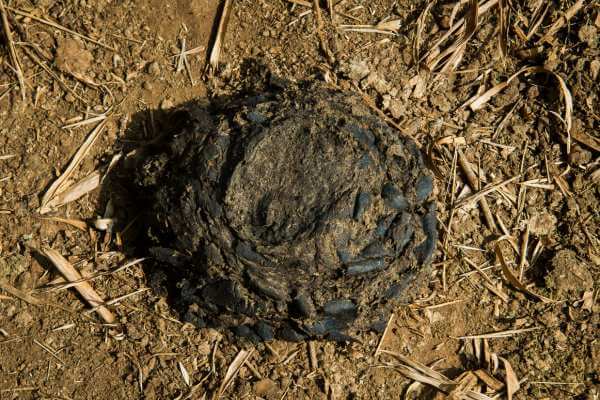
Now, imagine that the blooming season gets over for your clematis vine. You need to treat them with some more Nitrogen in this stage.
Therefore, cattle manure could be a great addition to kickstart the proceedings of making your homemade fertilizer for clematis in mid-summer.
Cattle manure is 3-2-1 in NPK, and they are rich in digested grass, grain, fruits, vegetables, or whatever the cattle diets of. And also with other organic matter such as straw and hay too.
In my experience, almost every plant accepts cattle manure. So why not the clematises?
You may see significant leaf growth and young leaves coming off.
To make the feeding process more efficient, you can make a liquid fertilizer with cattle manure with some easy steps.
All you need to do is soak all the cattle poop into a bucket of water and allow it to stagnate. Then keep it there for 3-4 days.
You can add some extra grass clippings if you want to encourage more Nitrogen in the liquid.
In this way, you will have a highly nutritious and concentrated homemade liquid fertilizer for clematis plants. So make sure you dilute it with enough water content before feeding them to clematises.
5. Worm castings
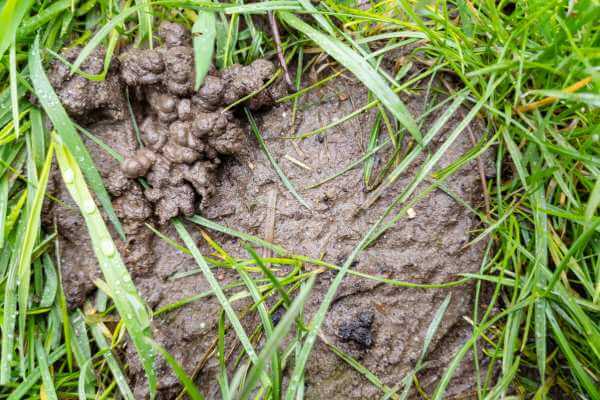
Earthworm fertilizer! Such a valuable gift from nature. You know what,
Asian farmers call worm castings ‘black gold’. Cause they are a really good soil conditioner.
This is an easy-to-prepare homemade fertilizer for clematis plants, as those are simply the poops of the earthworms.
Worm castings are 0.5-0.5-0.3 in NPK ratio. Therefore it could be a balanced fertilizer that has less Potassium and can be used during the growing season on your clematis vine.
On the other hand, worm castings are more alkaline at 7.0 of Ph. Therefore they can be used to cut off the acidity of the soil.
These worm castings will give multiple benefits to your clematis vines.
- Increase the absorbant of the soil.
- Adding beneficial microorganisms, and bacteria into the soil
- Improves germination
- Speeds the composting process
- Good aeration, drainage into the soil
I just surveyed a bunch of gardens and ask them whether is it beneficial to use worm compost on clematis.
Guess what. All the gardeners gave me a big “Yes” to use them on clematises.
In fact, they’ve encouraged me to use worm composts much more often as they will never ever burn the clematis roots even if they are very sensible.
So I think you’ll agree with me if I say worm compost is a perfect homemade fertilizer for clematis, and it’s fair to be called as black gold.
Here’s a visualization of the steps on how you can prepare your own worm compost fertilizers to treat your clematises.
6. Blood meal fertilizer
If you are talking about high Nitrogen fertilizers, you can’t neglect blood meal. It’s a perfect source of nitrogen, and it’s free.
This organic fertilizer is generally 15-1.3-0.7 in NPK ratio. Because of its too much Nitrogen content, you’ve to be somewhat careful when you use this as a homemade fertilizer for clematis.
What is blood meal, and is blood meal good for clematis plants?
Because of the high nitrogen percentage in blood meal, a diluted blood meal liquid fertilizer will be good for clematis plants during the growing season to encourage leaf growth of the plant.
How you can make blood meal fertilizer to feed your clematis vines?
First, find some animal blood from the nearest slaughtered house. Then you need to vapor off most of the water content in the blood. You are targeting to have a thick liquid of blood.
After you have the thicker liquid, you can set the blood tray under the sun or put it in a dehydrated, as the liquid turns out to a powder which is easy to break down.
I recommend you to dilute one cup of blood meal into 10 cups of water when you use blood meal as a fertilizer for clematises.
Note:- Making blood meal can smell bad. If you’re making it on your own, think before you choose the location.
7. Coffee grounds
Although everyone likes to drink coffee, not even half of them know that coffee grounds are a high nitrogen source.
It’s a well-concentrated nitrogen source, and approximately it’s 2-0.06-0.6 in NPK ratio.
Every time I talk about homemade fertilizers I don’t forget to mention coffee grounds as it’s in day-to-day use by everyone.
The cause of high nitrogen makes coffee ground liquid a good fit as a homemade fertilizer for clematis.
I preferred to feed coffee grounds by making a liquid by mixing them with some water and giving it 3-4 days to settle the things.
Feeding liquid fertilizers for clematis plants will help them with easy absorption of nutrients.
If you add just the coffee ground as the powder, it doesn’t matter. It’s a good slow releaser too.
Source – celassen.ucanr.edu
Best fertilizers for clematis in pots
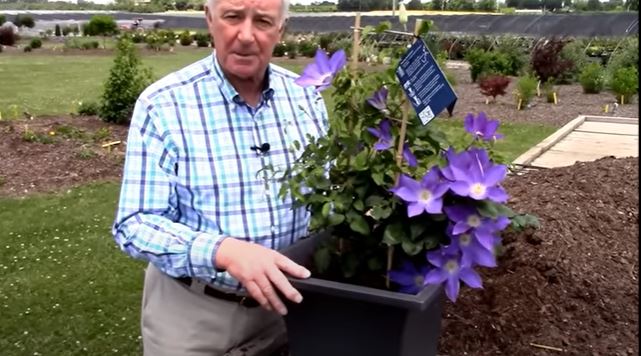
Unless you are planting with tiny containers, growing clematis vines in pots can be productive as you plant them on the ground.
In the aspect of fertilizing clematis in pots, most importantly, start with a good general-purpose potting mix with compost. Fertilize with more Nitrogen for leaf growth till the plant produce buds. Then fertilize with less Nitrogen and more Potassium to make buds bloom out into a flower.
Therefore fertilizers for clematis in pots have no different than the fertilizers for clematis you plant on the ground.
Tips to grow & fertilize clematis in pots
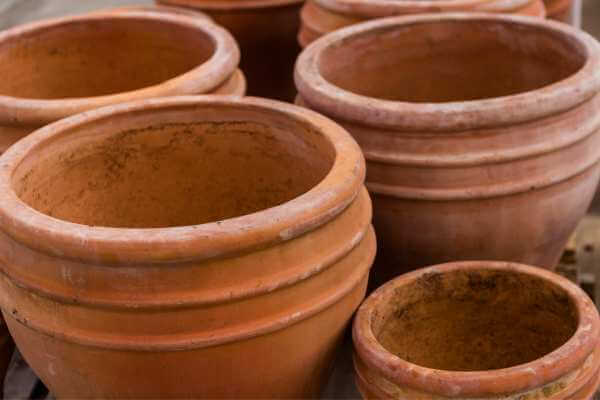
The best container : Your container should be a minimum of 18 inches in diameter if you want to grow a successful clematis vine. Also, the container should have good drainage holes as a soggy surface can rotten up the clematis roots. And I recommend having a clay or terracotta pot rather than a plastic one which can be heated up during the sun.
Fertilizing : As you do fertilizing clematis in pots, you have to be extra careful that you won’t spread them out on the base of the plant. Always remember to keep some distance away from the main stem of the plant when you fertilize clematises.
Is Epsom salt good for clematis?
Epsom salt is good for clematis as a solution for Magnesium deficiency in the plant. If the clematis leaves turn yellow or don’t have proper growth in good soil conditions, the plant might be experiencing Magnesium deficiency. Therefore you can use Epsom salt for clematis vines.
you can mix 1 cup of Epsom salt with 4 cups of water and sprinkle the liquid on the affected leaves or straight use the dry salt onto the soil.
Why use homemade fertilizers for clematis
There are thousands of products that can be found in local shops or on Amazon that can be used on ornamental plants such as clematis.
But here are some fair reasons why you should use your own homemade fertilizers for clematis, rather than using commercial ones.
1. Clematis has sensitive roots
The sensitivity of the root system of clematis vines makes the fertilizing options restricted.
Because the more concentrated you feed them, the more likely to burn them.
But when you make your own homemade fertilizer for clematis plants, you can control the nutrient content and how you concentrate them.
Therefore you can make it fewer chances to burn the roots and the plant.
2. Can control the acidity level of the soil
As I mentioned earlier, clematis is more likely to grow in neutral Ph soil.
For example, if your garden soil is more acidic, you can use a more alkaline homemade fertilizer for clematis vines to do both fertilizing and soil preparation for the plant.
But if you stay with commercial fertilizers, you may not be able to customize the effectiveness of the fertilizer according to your garden soil.
3. No chemicals
All of the above fertilizers are fully organic and no chemical ingredients are included.
So on a one hand, you can stay happy cause you keep doing organic gardening.
And one the other hand, you can grow any kind of food later in the particular area with no hesitation, as long as you don’t use any kind of chemicals in the soil which may be harmful within the fruits.
4. Mostly free and cheap
Most of the fertilizing options I mentioned above are charges you nothing. Because the ingredients can be found in your kitchen, at home, or in the garden.
So instead of paying a lot of money for commercial fertilizers, you can make homemade fertilizers for clematis almost free of charge.
